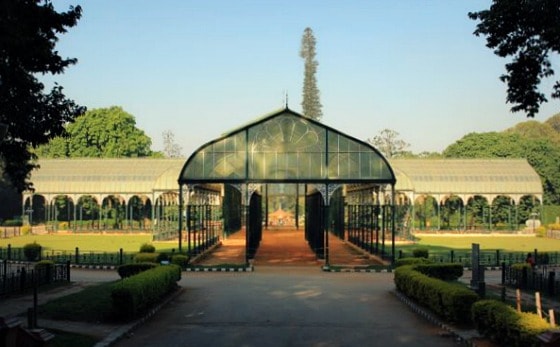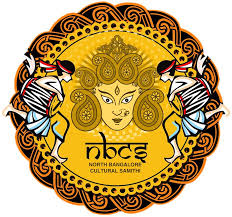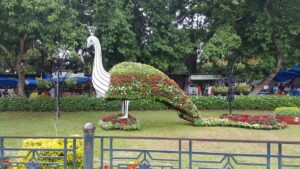
Often referred to as the “Garden City of India,” Bangalore is renowned for its expansive green spaces, flowering gardens, and calm public areas. Beyond its recreational and environmental benefits, however, these parks and public open spaces are essential to fostering the city’s thriving cultural scene. Bangalore’s parks serve as a vibrant hub for tradition, creativity, and community spirit among a rapidly evolving metropolitan landscape that is dominated by modernisation and technology.
These public areas serve as unofficial cultural gathering places for people of all ages and backgrounds, hosting anything from yoga classes in the morning to musical performances in the evening, as well as storytelling circles for kids and bhajan groups for older residents. This blog examines how Bangalore’s parks and open areas support the city’s cultural pulse by accepting contemporary manifestations while preserving its many customs.
A Historical Perspective: Parks as Cultural Pillars
Bangalore’s parks have a long history that began during the British colonial era, when areas like Cubbon Park and Lalbagh Botanical Garden were intended to serve as social and cultural hubs in addition to being botanical retreats. These parks eventually developed into meeting places for liberation fighters, poets, artists, and intellectuals.
That cultural heritage is still present in these areas today. Schoolchildren perform plays on outdoor stages, artists doodle beneath old trees, and early morning pedestrians hum Carnatic ragas. These parks serve as live cultural institutions in addition to being the city’s breathing lungs.
Cubbon Park: The Heart of Urban Culture
Cubbon Park, which is situated in the city’s core business centre, is more than just a green space. It is a vibrant public area that captures the changing cultural identity of Bangalore.
- Local artists play outdoors on weekends, usually in the Bandstand area, bringing folk, indie rock, and classical music.
- Flash mobs and street theatre organisations periodically engage in spontaneous performances, addressing social issues on the park’s natural stage.
- Meetings for book groups, poetry readings, and drawing sessions frequently take place beneath shaded ficus trees or next to bamboo groves.
Additionally, the park acts as a venue for intercultural activities including eco-awareness campaigns, Open Mic Sundays, and Bengaluru Habba. These gatherings encourage residents to engage in Bangalore’s cultural life beyond conventional bounds by promoting communication, creativity, and inclusion.
Lalbagh: A Garden of Heritage and Harmony
Lalbagh offers a more leisurely, historically rich experience, while Cubbon Park is a hive of urban cultural activity. Lalbagh, well-known for its recognisable Glass House and centuries-old trees, often holds events that honour the city’s long-standing customs.
- Every year on Republic Day and Independence Day, the Lalbagh Flower Shows combine traditional music, ethnic dances, and cultural exhibitions with floral design.
- The area is filled with spiritual tunes performed by Bhajan and classical music ensembles, particularly on weekends and festival mornings.
- The garden’s varied flora, rock formations, and colonial buildings serve as inspiration for photographers and artists.
Many visitors to Lalbagh are senior citizens who view the area as a daily cultural ritual, sharing memories, exchanging ideas, and preserving ties to Bangalore’s past.
Neighborhood Parks and Community Spaces: Local Traditions in Action
Bangalore has dozens of local parks and open spaces in addition to the famous gardens, particularly in residential neighbourhoods like Jayanagar, Malleshwaram, Indiranagar, Rajajinagar, and JP Nagar. These parks function as miniature representations of local culture.
- Evening bhajan mandalis and satsangs frequently incorporate harmonium and tabla accompaniments, fusing music with spirituality;
- morning yoga groups and laughing clubs foster holistic wellbeing while fostering a feeling of community.
- Parks become lively locations for rangoli competitions, folk dances, and group aarti rituals during festivals like Ganesha Chaturthi, Navaratri, and Sankranti.
- Storytelling sessions, puppet performances, and cultural activities for kids foster intergenerational learning and enjoyment.
Park areas are often used by a number of Resident Welfare Associations (RWAs) for events such as the raising of the flag on Independence Day, Kannada Rajyotsava festivities, and music events that showcase local and regional artists.
Open Amphitheatres and Cultural Plazas: Stage for Expression
To encourage easily accessible cultural participation, Bangalore’s local authorities and cultural organisations have created outdoor amphitheatres and urban plazas in public areas in recent years.
- Originally a penitentiary, Freedom Park has been transformed into a sizable public plaza where cultural events, conferences, exhibitions, and political debates often occur.
- JP Nagar’s Ranga Shankara Park encourages youngsters and amateur actors to display their skills by supporting outdoor theatre and storytelling.
- A burgeoning urban movement to incorporate art into daily life is seen in the Amphitheatre at Jakkur Lake, Kadugodi Tree Park, and related projects in Yelahanka and HSR Layout.
These specially designed areas give street performers, dancing groups, environmental educators, and even tech aficionados a place to socialise in an unstructured atmosphere.
Inclusivity Through Culture
The democratic character of Bangalore’s parks is among its most potent features. They provide a place for people from different economic, linguistic, gender, and age groups to interact. A software engineer playing the sitar, a migrant artist teaching kids to paint, or a retired professor reciting Basavanna’s vachanas—parks promote cross-cultural interaction without boundaries.
Non-Kannadigas are encouraged to learn local customs and become more fully integrated into the city’s culture through programs like Namma Shaale and Open Cultural Circles, which provide community art and language workshops.
Challenges and Opportunities
Bangalore’s parks and open spaces have a lot of promise culturally, but they also confront a number of obstacles:
- Commercialisation and congestion during big events;
- Ignorance and encroachment in less well-known neighbourhood parks;
- Inadequate infrastructure and upkeep for regular cultural programs
However, a growing number of RWAs, NGOs, and citizen volunteers are taking the lead as awareness and involvement rise. These cultural hotspots are being mapped and preserved by groups like the Namma Bengaluru Foundation and Cultural Mapping of Bengaluru. Storytelling walks, eco-theatre festivals, and mobile art buses are becoming commonplace in the city’s green areas.
Conclusion
Bangalore’s parks and public open spaces serve as the city’s cultural hubs and are more than simply places to relax. These areas provide opportunities for celebration, education, and connection at a time of fast-paced living and digital distractions. They revitalise heritage, foster inclusive growth, and let tradition and innovation to coexist.
The cultural vitality of Bangalore’s parks, whether it is a raga in the early mist of Cubbon Park or a child’s joy at a puppet performance in a local playground, captures the essence of a city that clings to its heritage while looking to the future.
Bangalore’s culture flourishes outside, beneath the sky, and inside the hearts of its citizens rather than within museum walls.





Leave a Reply